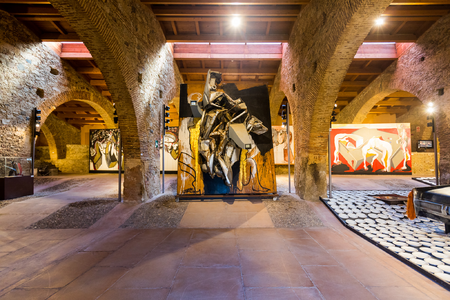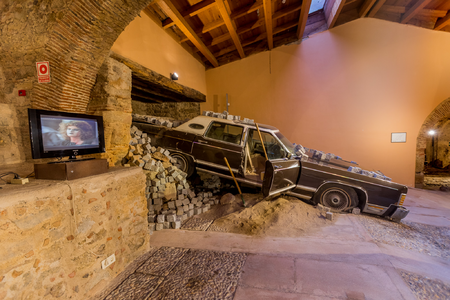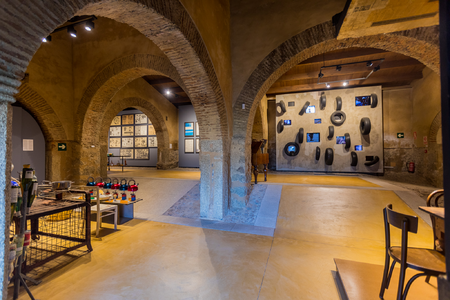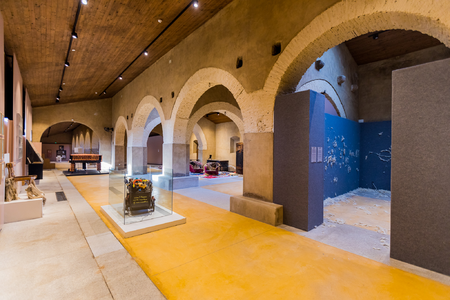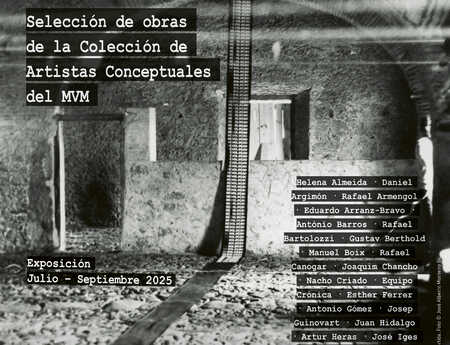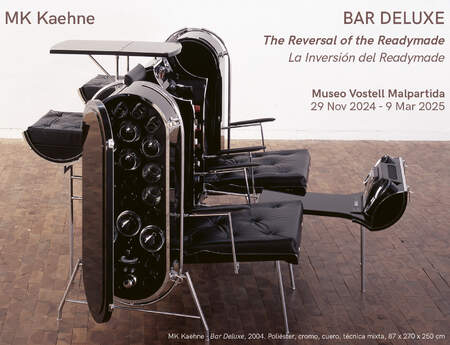
Ctra. De Los Barruecos, s/n Apartado de correos 20
10910 Malpartida de Cáceres
Spanien
MUSEO VOSTELL MALPARTIDA
Das Museo Vostell Malpartida im spanischen Ort Malpartida de Cáceres westlich der Provinzhauptstadt Cáceres in der Autonomen Gemeinschaft Extremadura ist dem Werk des deutschen Malers, Bildhauers, Fluxus- und Happeningkünstlers Wolf Vostell gewidmet. Das Museum steht seit 2024 unter der künstlerischen Leitung von Levin Vostell und unter der generellen Leitung von José Antonio Agúndez García.
Wolf Vostell reiste 1974 nach Malpartida de Cáceres (im Südwesten von Spanien) und gründete gemeinsam mit seiner Frau Mercedes Vostell im Jahr 1976 in einer Wollwäscherei (Lavadero de Lanas) aus dem 18. Jahrhundert das Museo Vostell Malpartida (MVM).
1994 übernahm die Landesregierung der Extremadura die Renovierung der Gebäude. Nach dem Tod von Wolf Vostell im Jahr 1998, wurde Mercedes Vostell die künstlerische Leiterin des Museums bis zu ihrem Tod im Jahr 2023. Im Jahr 2005 erwarb die Landesregierung das Wolf-Vostell-Archiv.
Das Museum besteht primär aus vier Teilen. Zwei Teile sind permanente Ausstellungen aus der Sammlung von Wolf und Mercedes Vostell, und ein Teil aus der Sammlung des italienischen Kunstsammlers Gino Di Maggio, der gezielt die Kunst der Fluxus-Künstler sammelte. Der dritteTeil ist eine Sammlung von Kunstwerken von Konzept-Künstlern. Zu dem Museum gehören ebenfalls die Skulpturen in dem Naturschutzgebiet Los Barruecos mit den Skulpturen VOAEX (1976) und El muerto que tiene Sed (1978) von Wolf Vostell. Zu erwähnen sind auch die Installationen Das Ende Parzivals von Salvador Dalí und Tajo von Yoko Ono.
Sammlung Wolf und Mercedes Vostell
Die Sammlung Wolf und Mercedes Vostell zeigt eine Auswahl von Installationen des Gründungskünstlers. Auto-Fieber (1973), Fluxus Buick Piano (1988) und Das Frühstück des Leonardo da Vincis in Berlin (1998). Die Skulpturen Los Toros de Hormigón, der Zyklus Trashumancia und andere Gemälde wie El Entierro de la Sardina (1985), Las Chicas del Billar (1986), Mythos Berlin (1986–1987) und Estrella Seelenfreund (1994).
Darüber hinaus verfügt die Sammlung Wolf und Mercedes Vostell über Gemälde des Zyklus VOAEX (1976) und El muerto que tiene Sed (1978). Erwähnenswert sind auch die Werke Transmigration III (1958–1959), in dem ein Fernsehgerät integriert ist und Montaña extranjera (1958), mit dem Wolf Vostell seine Produktion in der Extremadura begann.
Im Garten befindet sich die Skulptur von Wolf Vostell mit dem Titel Warum dauerte der Prozess zwischen Pilatus und Jesus nur zwei Minuten? (1996), bestehend aus dem Rumpf eines russischen Mig-21-Flugzeugs, zwei Automobilen, Computermonitoren und drei Klavieren.
Fluxus-Sammlung
Die Fluxus-Sammlung wurde dem Museum von Gino Di Maggio im Oktober 1996 geschenkt. Di Maggio knüpfte eine persönliche Beziehung zu den Fluxus-Künstlern, kümmerte sich um ihre Werke und stellte sie zunächst der Galerie Mult(h)ipla und später in der Fondazione Mudima in Mailand aus.
Die Ausstellung umfasst 250 Werke (Environments, Installationen, Gemälde, Skulpturen und Partituren) von 31 Künstlerinnen und Künstlern europäischer, nordamerikanischer und asiatischer Herkunft, die seit den späten 1950er und 1960er Jahren im Happening und der Fluxus-Bewegung die Umwälzungen in allen Bereichen der Kultur zugunsten einer Erneuerung des künstlerischen Feldes interdisziplinär und intermediär, alltagsübergreifend und als Keim einer grundlegenden gesellschaftlichen Transformation synthetisiert haben.




